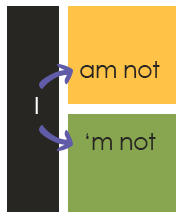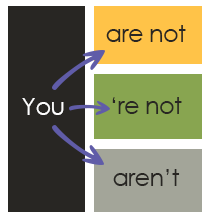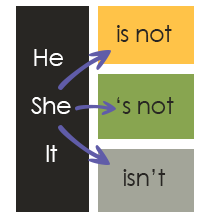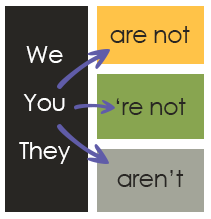
Verb tenses… hmmm… the least exciting of all grammar topics. At least to me!!
So let’s try and make it a bit more interesting by exploring ways to use it in context.
In real life, English native speakers do not consider what tense they need to use, they just know!
To help you remember we will explore when and how to use them… Ready?
The PRESENT CONTINUOUS (also known as the PRESENT PROGRESSIVE) can be used to talk about actions and events that are happening now, in the PRESENT, but can also be used to talk about the FUTURE… another confusing tense, I know! But don’t fear, you’ll soon understand how to use it.
How to use the PRESENT CONTINUOUS to talk about the PRESENT…
It is a tense we use most often to talk about actions and events happening at this exact moment and not yet finished. It is used to make clear that the action is temporary.
Someone is trying to break into your car.
This calculator isn’t working properly.
Is she looking for her dog?
To talk about repeated actions that cause annoyance, and is often used with an adverb of time (e.g. never, always, etc.). Note, if they do not bother you, you would normally use the PRESENT SIMPLE for repeated actions.
George is always tapping his foot on the floor.
I am getting tired of your being late all the time!
Why is it always raining in England?
How to use the PRESENT CONTINUOUS to talk about the FUTURE…
It is a tense we use most often to talk about future events that have been arranged by a person or individual, like entertainment events, planned trips or appointments.
Mary is going to the dentist tomorrow.
I am not visiting my hometown this Christmas.
Are they traveling to London this Saturday?
Warning!
If it is a fixed plan set and controlled by an organisation, and not an individual, we use the PRESENT SIMPLE.
HOW TO PUT IT TOGETHER TO MAKE SENTENCES?
The PRESENT CONTINUOUS is basically made by using ‘to be’ and the base form [V1] +ING form of the verb [which is what makes it ‘continuous‘] describing the action or event.
Affirmative sentences
Warning! ‘to be’ is an irregular verb;
I am
You are
He/She/It is
We are
You are
The are
For sentences that are ‘positive‘ or affirmative, you can use ‘to be’ and the V1 form with +ING at the end. See our lesson on -ING spelling rules, because of course there are rules and exceptions for that as well 😏!!

Remember;
‘I am’ = ‘I’m’
‘You are’ = ‘you’re’
‘He is’ = ‘He’s’
‘She is’ = ‘She’s’
‘It is’ = ‘It’s’
‘We are’ = ‘We’re’
‘You are’ = ‘You’re’
‘They are’ = ‘They’re’
Negative sentences
For sentences that are ‘negative‘ you use the same components, ‘to be’ and the V1 form of a regular verb with +ING at the end, but you have to add the ‘not’ after the auxiliary ‘to be’.

Questions
For questions you also use ‘to be’ as the auxiliary verb, but you must swap it 🔄 with the person/entity responsible for the action [the subject].

To make a negative question simply add a ‘not’ after ‘to be’ and before the person/entity responsible for the action [the subject].
Aren’t you traveling to New York this month?
Isn’t he watching your son right now?
TOP TIPS!!!
REMEMBER!! There are different ways to contract the verb ‘to be’. And yes, they are all correct!! But you might find some combinations easier to pronounce than others. Try them all out




And that is it! It wasn’t too bad after all! 😎
Here you have some online games to help you practice what you have learnt! ENJOY!!
There is a nice collection of all types of PRESENT CONTINUOUS exercises on this page!!
